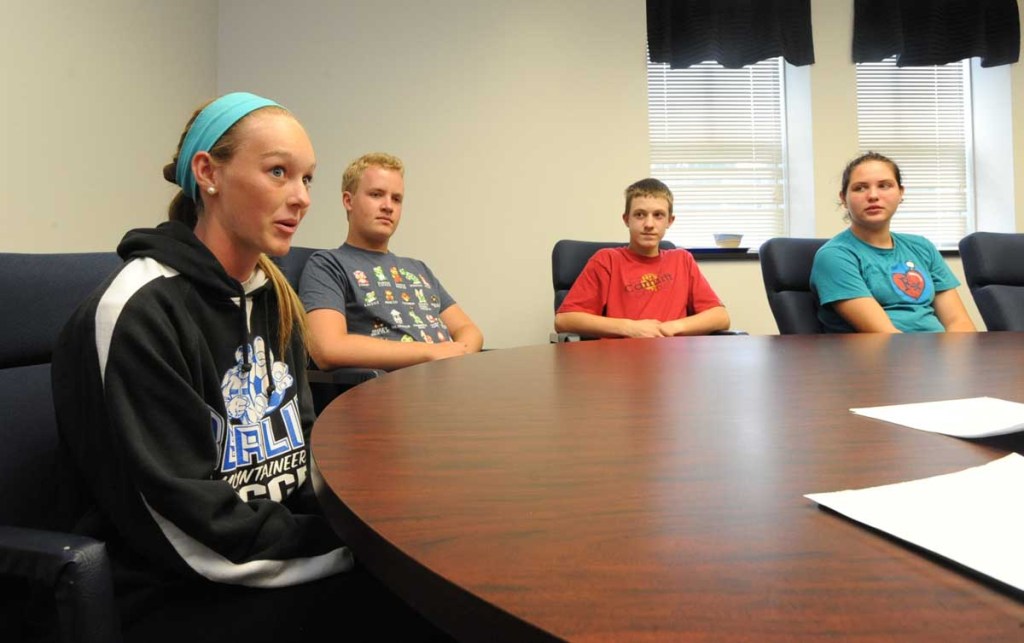They don’t remember the attacks, but they’ve grown up in a world shaped by 9/11
Published 4:06 pm Sunday, September 11, 2016

- In Pennsylvania, Shanksville-Stonycreek High School students, from left, Maddie Walker, 17; Robert Fidler, 17; Reece McCall, 14; and Samantha Creamer, 12, discuss growing up near the Flight 93 National Memorial and offer their thoughts on the terrorist attacks of Sept. 11, 2001, during an interview Sept. 6, 2016, at the school.
They’re called Generation Z — kids born after Sept. 11, 2001, whose knowledge of that day derives mostly from news documentaries, books, and the recollections of their parents.
These students and their peers will never know a life prior to 9/11. For them, the day the towers fell is just another day to be studied in class.
In Georgia, high school students agreed that, although 9/11 may be shown in a video or discussed briefly, the event itself and aftermath are not studied in great detail. What these teens know of the tragedy is information given to them by the media or their loved ones.
“I agree with everyone that it’s not taught as much as it should be. It’s not a very long section,” said 16-year-old Haley Hogan. “It’s preconceived that because some of us were alive, that we know what it is when I think there’s so much more we could learn from it. It’s not recognized as it should be.”
While their knowledge of the topic may be minimal, it does not mean their lives were unaffected by the aftermath.
Ian Buckles, 12, a seventh-grade student at Shikellamy Middle School in Pennsylvania, wasn’t born until 2004, but his father Earl knows all about 9/11. He was assigned to dangerous duty in Iraq as a result of the attack on the World Trade Center.
“Ian sees 9/11 as a day in our history, of course,” said Ian’s mother, Vivian Buckles. “But it’s more than that. He makes the connection — there was 9/11, he wasn’t born yet. And yet this attack led to his father being deployed in Iraq. That’s what 9/11 means to him on a personal level.”
For some, physical reminders of that day aren’t far from where a new generation is growing up. Hijacked Flight 93 crashed less than two miles north of the Shanksville, Pennsylvania high school.
“These groups of kids weren’t alive at the time, so they need to be taught most everything,” said Shanksville-Stonycreek High School social studies teacher J.P. O’Connor.
But his students can recount in detail what their teachers were doing at the moment Flight 93 went down.
“(The teachers) finally heard the news, so when the second (New York) plane crashed, they put all the kids in Mr. O’s room and they went to another room to watch the news,” seventh-grader Samantha Creamer, 12, said. “And then (a teacher) commented that, ‘If a plane crashes in Shanksville, the world’s going to end.’ Literally five seconds later, the plane crashed.”
The shock from the impact rattled the school building, the students have been told.
These stories and more form the substance of the Shanksville-Stonycreek faculty’s 9/11 curriculum. Although none of the students were there when Flight 93 crashed, they can rattle off the details of the event because, by talking about their experiences, their teachers have conveyed the reality of the attacks.
“I think they do get a lot of firsthand instruction from their teachers. Most of them were in the building on that day,” said Samuel Romesberg, superintendent of the Shanksville-Stonycreek School District.
O’Connor – the “Mr. O” in whose classroom students took shelter on 9/11 – said that in 2009, out of 27 students in one of his fourth-grade classes, only one knew that planes had crashed in New York, Washington and Somerset County. One other student knew that a plane had crashed near Shanksville, but 25 students had never heard of the 9/11 attacks.
In September each year, he tells his students about his experience at the school on 9/11 and shows them recordings of the day’s news coverage.
In the hallway outside his classroom, O’Connor has hung up 40 laminated commemorative pages – one in honor of each passenger and crew member from Flight 93 – from newspaper accounts. The pages include pictures and brief biographies of the passengers and crew of Flight 93.
But even students who have no direct ties to 9/11 or the aftermath have grown up in an America informed by the events of that day, and the fear that came after.
“It does affect me in a certain way,” said Georgia student Matthew Baun, 17. “It’s the subconscious. You have double thoughts when you hear a Muslim name or see a Muslim person. What people don’t understand is that it wasn’t every one of them carried out this attack. It was carried out by extremists. There are extremists in every religion.”
Details for this story were provided by the Valdosta, Georgia Daily Times, the Johnstown, Pennsylvania Tribune Democrat, and the Sunbury, Pennsylvania Daily Item.

